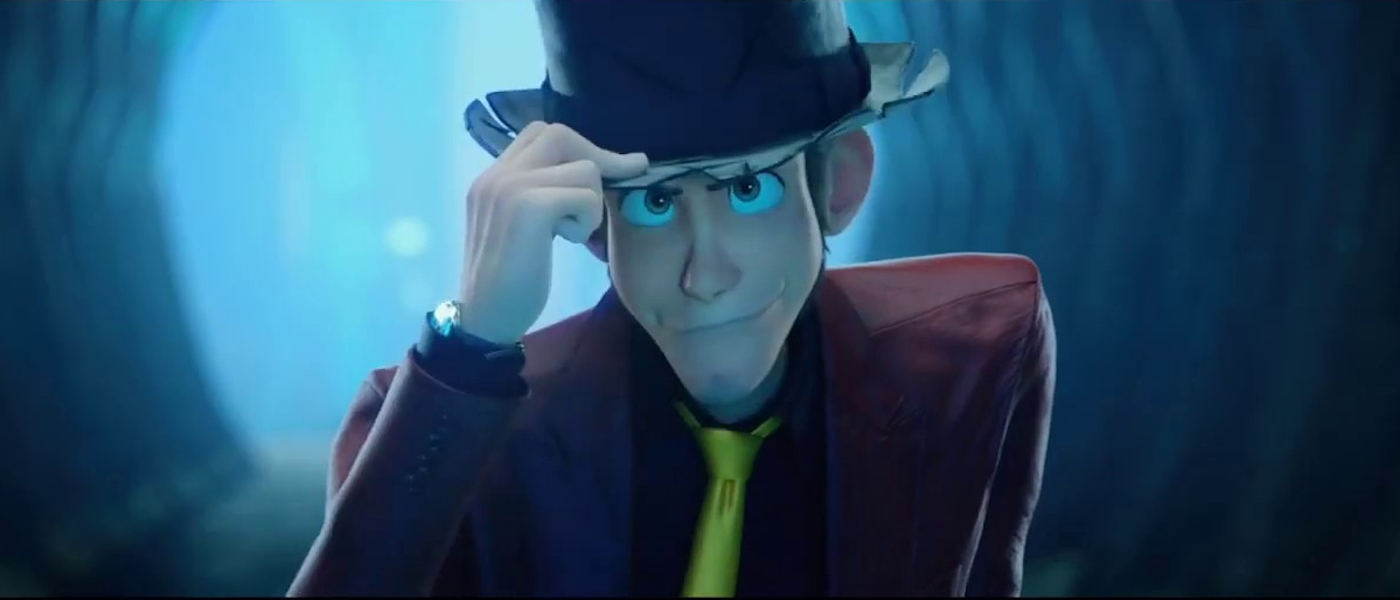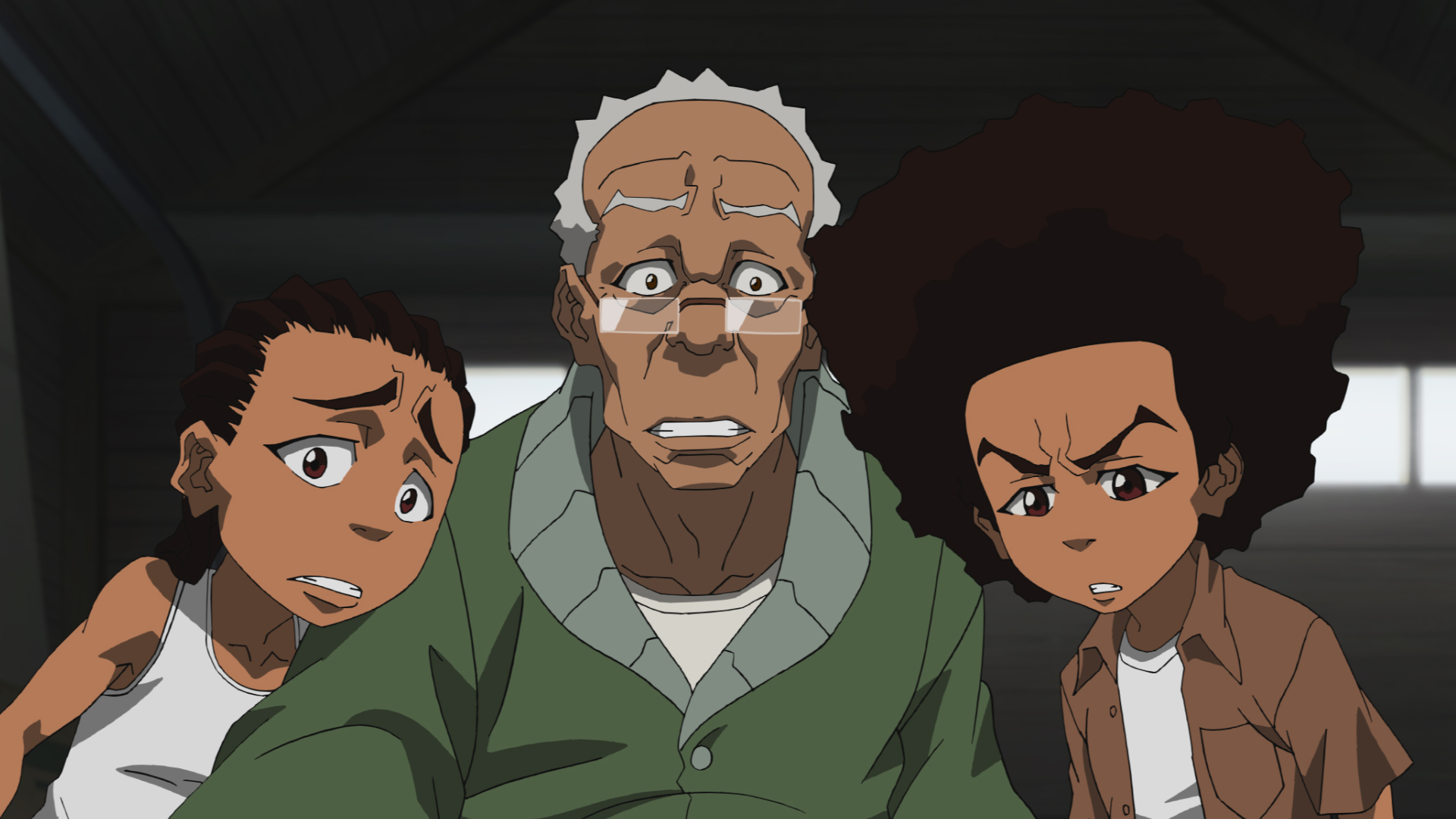English Dub Review: Lupin III: The First
Overview:
A prolific artifact known as the Bresson Diary, which charts all the way back to World War II, allegedly possesses the magical ability to resurrect the Third Reich when in the right hands. Laetitia, a budding thief and wannabe Indiana Jones, harbors an obsession over the Bresson Diary that only grows more intense over time. Soon it’s Laetitia’s own pride and the respect of her shifty grandfather that are at stake as she tries to locate the relic. Of course, when Laetita hits a few snags in her plan, she aligns herself with Lupin and these two talented grifters work together to obtain the legendary diary.
As the two bond and get deeper into their journey, it turns out that both Lupin and Laetitia share an important personal connection to the Bresson Diary that makes it far more valuable than the diary’s supernatural qualities indicate. Lupin and Laetitia try to recover the relic and are flung all across the world and forced to infiltrate busy venues and secret locations to figure out the whereabouts of the Bresson Diary and its significance to them. With a difficult task at stake and an evil tyrant on the rise, it’s up to the incorrigible master thief, Lupin the Third, to keep the fate of the world in balance.
Our Take:
The Lupin the Third series has been trucking along for over 50 years and it’s turned into one of the most popular anime out of Japan that’s still running strong. It’s taken some time for Lupin to gain the same level of notoriety in the United States, but past years have seen an abundance of Lupin content come overseas, all of which showcase the versatile nature of the action series. Lupin is a series of many flavors and even though Lupin III: The First is very much beginner’s Lupin, it’s still a very entertaining new adventure for the series.
Takashi Yamazaki is the writer and director of Lupin III: The First and he’s someone who feels especially well suited for this operation. Yamazaki has helped other traditional anime translate over into a CG venture, like with the recent Doraemon movie. Yamazaki may not have as extensive of a history with the Lupin series as some of the past directors, but he’s clearly having fun with the material and his fresh perspective fits with the film’s new visual aesthetic.
On that note, CG animation can seriously be a crutch for anime series, especially when they’re series that are supposed to elicit darker and more nihilistic themes, such as Berserk or Ghost in the Shell. However, in the case of Lupin III: The First, this CG style actually works for the film. While the recent CG Pokemon feature film’s art style left many scratching their heads, the approach looks great here and it allows the rich locations from around the world that Lupin visits to pop with a real magical visual flair that’s lacking in the original anime.
Lupin was never meticulously animated in the first place so not much is lost with this change, plus it works for the younger demographic that the film seems to cater towards. A lot of the time this film made me think about Spielberg’s Tin Tin film more than anything else, which honestly has a comparable energy and lasting legacy to Lupin. You’ll spend more time marveling at how slick and attractive Lupin’s new CG look is rather than getting pulled out of the experience over any awkwardness.
The Lupin franchise has such enjoyable and well-defined characters and everybody gets their due here. Lupin’s extended crew all get fun introductions (Goemon’s is particularly effective) and they’re properly played to their strengths. Fujiko, Jigen, and Goemon weave in and out of Lupin’s mission, but less is more here and there’s really not a wasted moment with any of the supporting characters in the movie. The brief tweaks to the character models also go a long ways too and Jigen and Fujiko in particular look great.
Lupin III: The First also introduces a new character, a budding thief named Laetitia, who’s treated like Lupin’s protégé through this adventure. Lupin’s supporting cast is strong, but this film is really a buddy effort between Lupin and Laetitia. Thankfully, Laetitia is a great character that you actually care about and in many ways she’s more of the main character of this story than Lupin. Her complicated relationship with her grandfather may feel a little predictable, but it still connects and gives her character a compelling emotional arc. She’s talented and compelling enough to rise to the challenge here and she and Lupin have fantastic chemistry throughout their various capers.
The Lupin the Third dubs have had a very fraught relationship with consistency. Numerous distributors and casts have been used over the years and it’s led to a bit of whiplash between productions. Lupin III: The First brings back a lot of the previous top talent like Tony Oliver as Lupin, Richard Epcar as Jigen, and Michelle Ruff as Fujiko which is appreciated. Laurie C. Hymes is also a strong addition as Laetitia and she sounds natural when she gets to riff with Lupin. It’s a solid dub that properly captures the manic energy of this crazy heist.
Lupin III: The First kicks off with a glorious heist scene that’s truly fun, fantastic, and feels like vintage Lupin. It’s an exciting scene that takes place at a precious artifacts auction where Lupin initially sets his sights on the Bresson Diary. The introduction sets the tone for the film and due to the film’s scant runtime of 93 minutes it’s able to move between action scenes without the movie ever really slowing down. Yuji Ohno’s score also helps compliment the film’s pace and there are a lot of pleasant jazz tracks through these antics as well as an orchestral callback to Castle of Cagliostro.
There are some really satisfying action set pieces throughout the film that maintain its frenetic pacing at a constantly rapid clip. There are a handful of thrilling car chases, fight scenes, and shootouts that all look exceptional thanks to the animation. The movie briefly indulges in a dogfight as Lupin and Laetitia plummet to the ground that looks exceptional. They’re all familiar elements to Lupin, but they’re used effectively here.
Not only do these crazy scenes look great, they’re also able to inject that classic Lupin sense of humor and charm into the action. It results in some really fulfilling climaxes. As effective as Lupin III: The First’s animation is, it’s still a little wonky at times when it comes to the characters’ faces, but it never becomes too much of a distraction and it’s still a mostly successful translation of the character models and how they operate.
Lupin III: The First often feels like it’s meant for younger audiences and that it’s supposed to be a new introduction to the series for a fresh demographic. The film features one of the weaker and more forgettable villains that shows up in a Lupin movie and the film is much more concerned about its sense of humor. That being said, this humor is definitely one of the best things about the movie and most of these jokes land. All of Lupin’s methods of deceit over Zenigata are hysterical and the universe feels more exaggerated than usual with Lupin the Third. At one point Lupin cracks a safe with about a dozen different locks on it that’s a perfect distillation of the broad place that this film lives.
Lupin III: The First is certainly one of the crazier Lupin endeavors, but if there’s any place where it goes too far it’s the movie’s final act which heads into alien technology in a very big way. It feels like a bit of a stretch for Lupin the Third and there are certain moments where spacecrafts attempt to terraform the world and resurrect the dead that look like they’re from out of an entirely different anime. It’s an unusual conclusion and one that riffs on Indiana Jones and the Last Crusade a little too hard, but it’s kind of worth it to get Lupin dressed up in a Hitler disguise. Implausibilities aside, it leads to an unpredictable turn that gets everyone working together on this unusual puzzle and there are some fun, surreal visuals that come from it all.
The ending to Lupin III: The First makes for a satisfying finish, but it shamelessly calls back to the Lupin franchise’s widely accepted high point, Castle of Cagliostro. Even if the allusion feels appropriate and conjures some warm memories here, this has practically become a recurring nostalgia grab in every recent Lupin movie. The constant references of Castle of Cagliostro make each subsequent one feel a little less powerful. Again, it’s a nice moment here and it does work, but it’s yet another familiar element that speaks to how Lupin III: The First is Lupin on autopilot a lot of the time.
Lupin III: The First is a totally serviceable Lupin film, but it plays it safe and there’s really nothing in this story that hasn’t been tackled before and with a stronger hook. These predictable and easy narrative choices make Lupin III: The First feel regressive in contrast to the past few Lupin films and specials, which have mostly been an encouraging lot. Despite the film’s lack of ambition when it comes to its story, it still amounts to a very entertaining and enjoyable experience that doubles as a soft reboot of sorts for a new crowd.
I could honestly see a series of CG Lupin films carry on in tandem to the traditionally animated movies, with each one catering to a different demographic and style of the series. It’s actually a good idea and it’s a little surprising that more long-running franchises haven’t attempted a bifurcation of this style. There are spin-off anime series to the core Pokémon and Dragon Ball series at the moment, which fulfill very different agendas, and is the most similar thing I can think of. Lupin has such history that it could take this idea even further. Lupin III: The First doesn’t try to reinvent the wheel, but it’s a lovable continuation of Lupin’s exploits that would make the series’ creator, Kazuhiko Kato, proud.
























"There are also other characters that come and go (also owned by the Warner Bros. Discovery conglomerate media company)."
Huh. Is that just referring to other characters from the show itself, or is this implying that the new season is going to have cameos from other WBD IPs